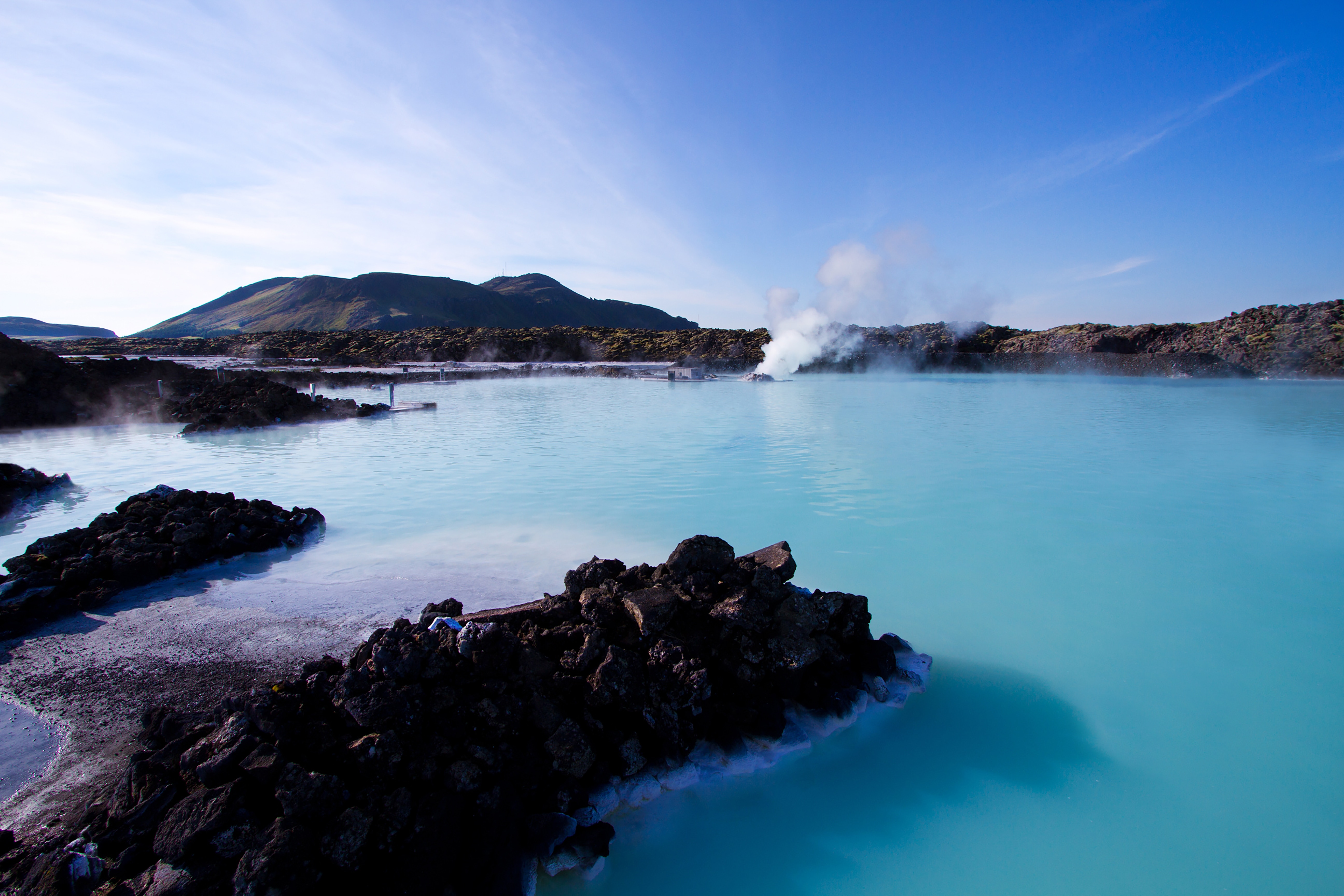Hey there, fellow wanderlust souls! Ever heard about the enchanting blue lagoon? If you haven’t, buckle up, because we’re about to dive deep into the mesmerizing world of this natural wonder. Imagine crystal-clear turquoise waters, surrounded by rugged lava fields, and an atmosphere that feels like stepping into a dream. The blue lagoon isn’t just a place; it’s an experience, a sanctuary where nature meets luxury, and relaxation meets adventure. Sounds intriguing, right?
Located in Iceland, the blue lagoon is more than just a tourist attraction. It’s a symbol of Iceland’s unique geological wonders, a geothermal spa that has captured the hearts of travelers worldwide. But what makes it so special? Why does it attract millions of visitors every year? Stick around, because we’re about to uncover the secrets behind this natural marvel.
Before we dive deeper, let me tell you something. The blue lagoon isn’t just about soaking in warm waters. It’s about connecting with nature, indulging in self-care, and creating memories that last a lifetime. Whether you’re a solo traveler, a couple looking for a romantic getaway, or a family seeking adventure, the blue lagoon has something for everyone. So, let’s get started and explore the magic of this iconic destination!
Read also:Unveiling The Magic Of Romantic Moments Your Ultimate Guide
Table of Contents
- What is Blue Lagoon?
- History of Blue Lagoon
- The Geology Behind Blue Lagoon
- Benefits of Visiting Blue Lagoon
- Things to Do at Blue Lagoon
- Best Time to Visit Blue Lagoon
- Tips for First-Time Visitors
- How to Get to Blue Lagoon
- Accommodation Near Blue Lagoon
- Conclusion
What is Blue Lagoon?
Alright, let’s break it down. The blue lagoon is a geothermal spa located in a lava field in Grindavík on the Reykjanes Peninsula in southwestern Iceland. It’s not just any spa; it’s a natural wonder that has been formed by the geothermal activity in the area. The water in the lagoon is rich in minerals like silica and sulfur, which are known for their healing properties. People flock from all over the world to soak in these warm, mineral-rich waters and experience the therapeutic benefits firsthand.
But wait, there’s more! The blue lagoon isn’t just about the water. It’s an entire experience that includes luxurious facilities, stunning views, and a sense of tranquility that’s hard to find anywhere else. Whether you’re looking to unwind after a long day of sightseeing or seeking a rejuvenating escape, the blue lagoon has got you covered.
Why is it So Famous?
Well, the fame of the blue lagoon isn’t accidental. It’s a combination of its natural beauty, unique location, and the health benefits it offers. Imagine soaking in warm, mineral-rich waters while being surrounded by rugged lava fields. It’s like being in a different world, a world where stress melts away, and peace takes over. Plus, it’s been featured in countless travel guides, magazines, and even movies, making it a must-visit destination for anyone traveling to Iceland.
History of Blue Lagoon
Now, let’s take a trip back in time. The blue lagoon wasn’t always the world-famous spa it is today. It all started in the 1970s when the nearby geothermal power plant, Svartsengi, began operations. The lagoon was formed accidentally when the plant discharged warm, mineral-rich water into the surrounding lava fields. People quickly realized the therapeutic benefits of these waters and started visiting the area to soak in them.
In 1981, the first official spa was opened, and the rest, as they say, is history. Over the years, the blue lagoon has evolved into a world-class destination, attracting millions of visitors each year. It’s not just a spa; it’s a symbol of Iceland’s natural beauty and a testament to the country’s commitment to sustainable tourism.
Fun Facts About Blue Lagoon
- The water temperature in the lagoon averages between 37°C and 39°C (99°F to 102°F).
- The lagoon contains around 6 million liters of geothermal seawater.
- It’s one of the most visited attractions in Iceland, welcoming over a million visitors annually.
The Geology Behind Blue Lagoon
So, how did the blue lagoon come to be? Well, it’s all about geology, baby! Iceland is a land of fire and ice, and the blue lagoon is a perfect example of that. The lagoon is located in a lava field, which is a result of volcanic activity. The geothermal activity in the area heats the water, and the minerals in the water come from the volcanic rocks surrounding it.
Read also:Discover The Power Of Love A Journey Beyond Words
The silica in the water forms a natural mask that’s great for your skin, while the sulfur helps with skin conditions like psoriasis and eczema. It’s like nature’s own spa treatment, and it’s all thanks to the unique geology of the area. Isn’t that amazing?
How Does it Work?
Here’s the science behind it. The water in the blue lagoon is heated by the geothermal activity beneath the earth’s surface. The water is then pumped into the lagoon, where it mixes with the silica and sulfur-rich minerals. This creates a unique environment that’s perfect for relaxation and rejuvenation. So, the next time you’re soaking in the lagoon, remember that it’s all thanks to the incredible forces of nature.
Benefits of Visiting Blue Lagoon
Alright, let’s talk benefits. Visiting the blue lagoon isn’t just about having fun; it’s about taking care of yourself. The mineral-rich waters are known for their therapeutic properties, and they can do wonders for your skin and overall well-being. Here are some of the benefits you can expect:
- Relaxation: The warm waters are perfect for unwinding after a long day.
- Healing Properties: The silica and sulfur in the water are great for skin conditions like psoriasis and eczema.
- Stress Relief: The tranquil surroundings and soothing waters can help reduce stress and anxiety.
- Beauty Benefits: The silica mask in the water can leave your skin feeling soft and smooth.
So, whether you’re looking to improve your skin, reduce stress, or just relax, the blue lagoon has something for everyone.
Things to Do at Blue Lagoon
Now that you know why the blue lagoon is so special, let’s talk about what you can do there. The lagoon offers a range of activities that cater to different interests and preferences. Here are some of the things you can do:
- Soak in the Waters: This is the main attraction, of course. Spend some time soaking in the warm, mineral-rich waters and let your worries melt away.
- Try the Silica Mask: The natural silica mask in the water is great for your skin. Simply scoop some up and apply it to your face for a spa-like experience.
- Enjoy a Cocktail: The lagoon has a bar where you can enjoy a refreshing cocktail while you soak. Cheers to that!
- Explore the Surroundings: Take a walk around the lagoon and enjoy the stunning views of the lava fields.
There’s something for everyone at the blue lagoon, whether you’re looking for relaxation, adventure, or a bit of both.
Best Time to Visit Blue Lagoon
When’s the best time to visit? That depends on what you’re looking for. If you want to avoid the crowds, consider visiting during the off-peak season, which is usually from November to March. However, keep in mind that the weather can be unpredictable during this time. If you don’t mind the crowds and want to experience the lagoon in all its glory, the summer months are a great option.
No matter when you visit, make sure to book your tickets in advance. The blue lagoon is a popular destination, and tickets can sell out quickly, especially during peak season.
Tips for First-Time Visitors
First-time visitors, listen up! Here are some tips to make the most of your visit:
- Book in Advance: As I mentioned earlier, the blue lagoon can get crowded, so it’s always a good idea to book your tickets in advance.
- Bring a Towel: Towels are available for rent, but bringing your own can save you some money.
- Wear Flip-Flops: The ground around the lagoon can be rough, so wearing flip-flops is a good idea.
- Be Prepared for Cold Weather: Even in summer, the weather in Iceland can be chilly, so bring a warm robe or towel to wrap up in after your soak.
With these tips in mind, you’ll be all set for an unforgettable experience at the blue lagoon.
How to Get to Blue Lagoon
Getting to the blue lagoon is pretty straightforward. It’s located about 30 minutes from Keflavík International Airport and about an hour from Reykjavík. You can take a bus, rent a car, or join a guided tour. If you’re short on time, taking a bus or joining a tour might be the best option, as they often include transportation to and from your hotel.
Pro tip: If you’re renting a car, make sure to check the weather conditions before you head out. Iceland’s weather can be unpredictable, and driving conditions can change quickly.
Accommodation Near Blue Lagoon
Looking for a place to stay near the blue lagoon? There are several options available, ranging from luxury hotels to budget-friendly guesthouses. Some popular choices include the Blue Lagoon Hotel, the Silica Hotel, and the Fosshotel Reykjanes. These accommodations offer easy access to the lagoon and are perfect for those who want to make the most of their visit.
When choosing accommodation, consider your budget, travel style, and proximity to other attractions. If you’re planning to explore more of Iceland, staying in Reykjavík might be a better option, as it offers easy access to many other popular destinations.
Conclusion
And there you have it, folks! The blue lagoon is more than just a spa; it’s an experience that combines nature, luxury, and relaxation. Whether you’re a first-time visitor or a seasoned traveler, the blue lagoon has something for everyone. From the therapeutic benefits of the mineral-rich waters to the stunning views of the surrounding lava fields, it’s a destination that truly lives up to its reputation.
So, what are you waiting for? Book your tickets, pack your bags, and get ready for an unforgettable adventure. And don’t forget to share your experience with us in the comments below. Who knows, your story might just inspire someone else to visit this magical destination!
Until next time, keep exploring and keep dreaming. The world is out there, waiting for you to discover its wonders. Cheers to that!

